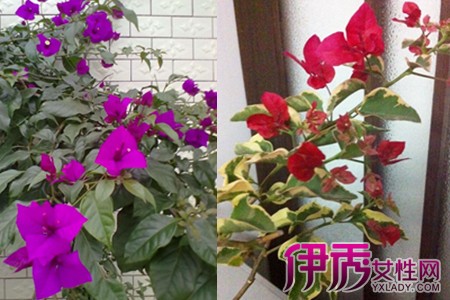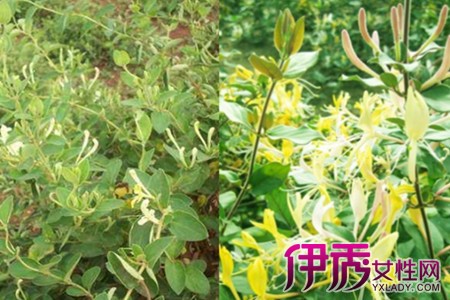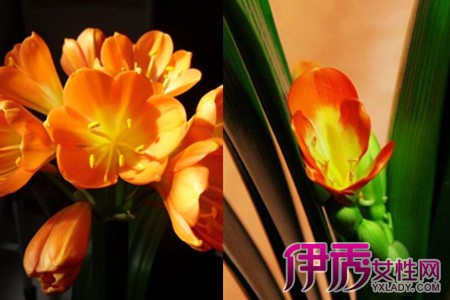The cutting skills of triangular plum teach you the method of propagation of this kind of flower by hand.

Triangular plum is not only a very beautiful flower, but also a kind of flower that is easy to raise in school. You can usually see this kind of flower in the park. The flowers are colorful, such as fuchsia, milky white, orange and bright red. There are single-lobe and double-valve species.
This kind of flower is of great ornamental value because it blooms very densely and beautifully. Many people like to raise this kind of flowers. There are three propagation methods for this kind of flowers, one is high-pressure propagation, one is grafting propagation, and the other is cutting propagation.
Triangular plum is a kind of flower that is very easy to live, and the cutting method of its three propagation methods is relatively simple and easy to learn. In general, cutting propagation should choose a time when it is easy to survive. This kind of flower is very easy to survive from March to June after the beginning of spring.
The best way to choose the root for cutting propagation is to choose the branches facing the sun, and it is best to have new branches and old branches on the branches, and the length of cuttings should be about 8-10 cm. Don't leave too many leaves on the cutting branches, just have three or four leaves.
When planting, the soil can choose sandy loam with very good permeability, loose soil and soil with coarse and fine sand. In addition, it is possible to cut with burnt briquettes, or with vermiculite and perlite.
Sterilize at high temperature before cutting, just sterilize with boiling water. Mix the flower rooting powder according to the instructions and soak the base of the cuttings with it, so that the rooting speed of the cuttings will be faster.
Insert the branches into the soil about 7-8 cm and cover the soil, then pour some water that has been in the bucket. Wrap the potted cling film with cuttings and put a few breathable holes in a place with a small amount of sunlight for breeding.
Rose planting methods Rose planting techniques the editor teaches you to plant roses hand in hand
Planting a garden full of roses in your home is sure to make it romantic and sweet. Do you also want to add a garden of roses to your beloved home? The editor will bring you rose planting techniques today and teach you how to plant roses hand in hand.
Rose planting technique
Soil selection
It is better to choose the neutral acid soil with low groundwater level, loose and fertile soil, good drainage, rich organic matter and deep soil layer. the effective tillage layer of the soil is 80-100 cm and the pH value is 5.5-6.5. The soil must be selected so that the roses will be more delicate and beautiful. Rose planting technique
Fertilizing and watering
Rose likes fertilizer, so it is necessary to apply mature organic liquid fertilizer every 10 days after pot planting, and some liquid fertilizer containing phosphorus and potassium should be applied during bud formation. Watering should depend on the weather conditions, hot summer should be watered every day, usually see the pot soil dry can be watered thoroughly, remember to pick off the residual flowers in time after flowering. Rose planting technique
Cultivation and management techniques
1. Variety selection
According to the local climatic conditions and market demand, the varieties resistant to inflammation and heat in summer and autumn, low temperature resistance in winter and spring, disease resistance and high yield were selected, and the proportion of flower pattern and color was arranged reasonably. The selection of rose varieties is very important. two。 Pre-planting preparation
Soil improvement: for alkaline soil, fully mature barnyard manure, compost, drug residue, grain husk, sawdust and other materials should be combined with deep turning to improve soil improvement; plant ash and lime can be used to neutralize acid soil to improve soil; the depth of improved soil layer should be more than 40 cm. Land preparation: 1.3 meters per ridge, the width of the border is 60 cm, the height of the border is 30-40 cm, and the width of the furrow is 40-50 cm.
Base fertilizer: 3000 kg of fully mature organic fertilizer and 50 kg of superphosphate and 50 kg of compound fertilizer are applied per mu. Soil disinfection: evenly spray 40% formalin 50 times solution 400 ml ~ 500 ml, cover with plastic film, remove the plastic film after sealing for 2 ~ 3 days, and use after 2 weeks of ventilation; or sprinkle lime powder at the dose of 30 mg / m2 ~ 40 mg / m2 and mix well.
Seedling selection: the use of grafted seedlings or cutting seedlings, strong seedlings, without pathogens, protozoa. The cutting seedlings should be replaced after 2 ~ 3 years, and the grafted seedlings should be replaced after 4 ~ 5 years. Planting: 2 rows per row, plant spacing 15 cm ~ 25 cm, row spacing 40 cm. When planting, the root system of the plant should be scattered around, and the grafting interface should be 1 cm ~ 2 cm higher than the topsoil. Planting time: it should be planted from March to April, and the flowers usually begin to produce flowers 6 months after planting. Rose planting technique
Post-planting management
Summer management: heat prevention and cooling, ventilation and moisture drainage, timely drought and drainage, frequent application of thin fertilizer, strengthening pest control, pruning management according to non-flowering period, branch protection and leaf protection. Autumn management: strengthen fertilizer and water management, promote plant growth, transfer to pruning management during flowering period, and promote flower branch germination. Winter management: close the greenhouse, heat preservation, moisturizing, in order to improve the output and quality of cut rose flowers, at the same time, pay attention to weather changes, timely ventilation.
Cultivation environment monitoring: it is representative to select 3 to 5 points in the greenhouse to place the temperature and humidity meter, and record the temperature, humidity and light intensity regularly every day, as the basis for the regulation of light intensity and temperature and humidity. Light intensity regulation: the light should be sufficient, and the light intensity should be 25000 lux ~ 50000 lux.
Temperature and humidity regulation: the most suitable growth temperature is 24 ℃ ~ 26 ℃ in daytime and 14 ℃ ~ 16 ℃ at night. When the temperature in the greenhouse is higher than 28 ℃, cooling measures such as ventilation and shading should be taken in time, and cold prevention measures should be implemented according to the weather conditions in winter. The most suitable air relative humidity for growth is 50% to 80%.
Water management: rose is a big water and fertilizer crop, irrigation should use a clean water source, drenched with root water, sprinkler irrigation for 4-5 minutes each time at 1-2 noon every day after planting to increase air humidity; keep the soil moist after planting. It is watered every 4 ~ 6 days in winter and every 2 ~ 3 days in summer.
Nutrition management: proper application of nitrogen fertilizer in stem and leaf growth period, and phosphorus and potassium fertilizer in flowering stage. The ratio of nitrogen, phosphorus and potassium should be 3:1:1 in the growing period and 1:1:1 in the flowering period. Appropriate supplement of trace elements, or more fertilization into a comprehensive organic fertilizer. Quick-acting chemical fertilizer was applied every 10 ~ 15 days, slow-acting organic fertilizer was applied every 1.5 ~ 2 months, and balanced fertilization combined with irrigation. Foliar fertilization has a better auxiliary effect, and 0.2%-0.4% potassium dihydrogen phosphate solution is sprayed on the leaf during flowering. Rose planting technique
Prune roses
Pruning method: for pruning on branches, the cut mouth should be flat, the cut mouth should be above the node, the upper edge of the cut surface should be about 0.2 cm higher than the axillary bud, and the lower edge of the cut surface should be higher than the position of the bud root, and the distance from the bud root should be 0.5 cm ~ 3 cm.
Pruning in non-flowering period: always pay attention to cutting off withered branches, disease and insect branches, rootstock branches, staggered dense branches, blind branches, residual flowers, lateral buds and so on. Such as the maintenance period of the plant between the seedling stage and flowering stage or the weakening of plant growth and serious defoliation, staggered dense branches and blind branches are temporarily retained to facilitate the restoration of plant growth.
When trimming, the cut is close to the base of the branch, do not leave the residual pile. According to the different germination ability of axillary buds among varieties, the overgrown branches should be cut at 0.5 cm ~ 3 cm above 30 cm ~ 50 cm buds at the base of the branches and cultivated into new main branches. Generally, cultivated roses have 4 or 7 main branches.
Conclusion: the above are the detailed rose planting techniques introduced by Xiaobian to combat. Cultivating roses according to the above methods will certainly make your garden too beautiful to be true. As long as you take good care of your roses, you will be able to spread the rose aroma all over the garden. For more information on decoration, you can also log on to Ai Youwang. Recommended reading: | Flower language of red roses | except formaldehyde plants | function of green roses | efficacy and function of Hangzhou white chrysanthemum | when does lotus blossom | | efficacy and function of jasmine tea | Happiness tree picture | function of lavender | Flower language of daisies | efficacy of Kunlun snow chrysanthemum | | Culture method of Junzi Orchid | Culture method of Ivy | Ginkgo planting | Orchid Variety | | is it easy to raise carnations | cultivation method of triangular plum | efficacy and function of yellow chrysanthemum | Gesang flower language | is calla lily poisonous | | what plant absorbs formaldehyde | potted flower picture | efficacy of jasmine tea | efficacy and function of woody fragrance | hydroponic rich bamboo |
- Prev

It is no longer difficult to learn the planting method of honeysuckle to keep healthy and become rich.
Honeysuckle is a kind of Chinese herbal medicine that has been available in our country since ancient times. In ancient times, this kind of medicine was picked from the mountains. In recent years, people have begun to learn the planting technology of this herb, and if they learn this technology, they can cultivate honeysuckle in large quantities.
- Next

When did the beautiful and noble orchid blossom? did you get the scientific planting method?
Cymbidium is a kind of highly ornamental plant, and it is more fastidious when planted. If you want to grow it well, you have to do a lot of homework. If you don't plant it properly, it's hard to keep it. Take a quick look at how to grow it.
Related
- Fuxing push coffee new agricultural production and marketing class: lack of small-scale processing plants
- Jujube rice field leisure farm deep ploughing Yilan for five years to create a space for organic food and play
- Nongyu Farm-A trial of organic papaya for brave women with advanced technology
- Four points for attention in the prevention and control of diseases and insect pests of edible fungi
- How to add nutrient solution to Edible Fungi
- Is there any good way to control edible fungus mites?
- Open Inoculation Technology of Edible Fungi
- Is there any clever way to use fertilizer for edible fungus in winter?
- What agents are used to kill the pathogens of edible fungi in the mushroom shed?
- Rapid drying of Edible Fungi

